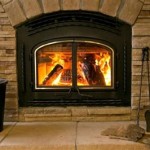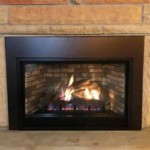Will An Electric Fireplace Heat A House?
Electric fireplaces have grown in popularity as supplemental heating sources and aesthetic additions to homes. Their ease of installation, lack of need for venting, and variety of styles make them an attractive option for many homeowners. However, a common question arises: can an electric fireplace effectively heat an entire house? The answer is complex and depends on several factors, including the size of the house, the power of the electric fireplace, the home's insulation, and the desired temperature.
Electric fireplaces function by using electric resistance to generate heat. This heat is then distributed into the room via a fan or through radiant heat. The efficiency of this process depends on the design and quality of the heating element and the fan mechanism. Generally, electric fireplaces are designed to heat a specific area rather than an entire house. They are more accurately categorized as space heaters.
To understand the capabilities of an electric fireplace, it is necessary to examine its heating capacity. This is typically measured in British Thermal Units (BTUs) or wattage. Most standard electric fireplaces produce around 5,000 BTUs, which is equivalent to approximately 1,500 watts. This level of heat output is generally sufficient for heating a room of around 400 square feet under ideal conditions. Ideal conditions include adequate insulation, minimal drafts, and a moderate outdoor temperature.
The effectiveness of heating a house with an electric fireplace is significantly impacted by the home's existing heating system. If a central heating system is already in place, the electric fireplace serves as a supplement, providing additional warmth to specific areas. This can be beneficial for rooms that are often colder than others or during shoulder seasons when the central heating system is not yet needed for the entire house. However, if the intention is to rely solely on an electric fireplace to heat the entire house, the limitations become apparent.
Key Point 1: Factors Affecting the Heating Capacity of an Electric Fireplace
Several variables influence the ability of an electric fireplace to heat a space effectively. Understanding these factors is crucial in determining whether an electric fireplace is a suitable heating solution for a given situation.
Room Size and Layout: The size of the room the electric fireplace is intended to heat is a primary consideration. As previously mentioned, a 5,000 BTU electric fireplace can typically heat a 400-square-foot room. Larger rooms will require multiple units or a more powerful heating source. The layout of the room also plays a role. Open floor plans can make it more difficult to maintain a consistent temperature, as the heat will disperse more readily. Rooms with many doorways or openings to other parts of the house will also lose heat more quickly.
Insulation and Drafts: Adequate insulation is essential for retaining heat within a room. Poorly insulated walls, windows, and ceilings will allow heat to escape, reducing the effectiveness of the electric fireplace. Drafts from windows, doors, and other openings will also contribute to heat loss. Addressing these issues by sealing windows and doors, and improving insulation, can significantly improve the heating efficiency of the electric fireplace.
Outdoor Temperature: The temperature outside the house directly impacts the amount of heat required to maintain a comfortable indoor temperature. On colder days, the electric fireplace will need to work harder to compensate for the heat loss. In extremely cold climates, an electric fireplace may not be sufficient to provide adequate heat, even for a small room, without supplemental heating.
Electric Fireplace Features and Settings: Some electric fireplaces offer adjustable heat settings, allowing users to control the amount of heat produced. Others may include features such as a thermostat, which automatically adjusts the heat output to maintain a desired temperature. Additionally, the type of heating technology used can affect efficiency. Infrared heating, for example, is often more efficient at directing heat towards objects and people, rather than heating the air itself.
Key Point 2: Electric Fireplace as a Supplemental Heating Source
The primary purpose of an electric fireplace is often as a supplemental heating source, rather than a primary heating system for an entire house. In this role, it can offer several advantages.
Zone Heating: Electric fireplaces excel at zone heating, allowing users to heat specific rooms or areas of the house while leaving other areas cooler. This can be a more energy-efficient approach than heating the entire house, especially if certain rooms are used more frequently than others. For example, an electric fireplace in the living room can provide warmth while the bedrooms remain cooler during the day.
Cost Savings: By using an electric fireplace in specific areas, it is possible to reduce the overall energy consumption of the house. This can lead to lower heating bills, particularly during periods when the central heating system would otherwise be running at full capacity. The exact amount of savings will depend on the usage patterns and the cost of electricity in the area.
Aesthetic Appeal: Beyond its functional benefits, an electric fireplace offers significant aesthetic appeal. It can create a cozy and inviting atmosphere in a room, adding a touch of elegance and warmth. The visual appeal of the flames can enhance the overall ambiance of the space, making it a desirable addition to many homes.
Ease of Installation: Electric fireplaces are relatively easy to install compared to traditional wood-burning or gas fireplaces. They do not require venting or a chimney, and can be plugged directly into a standard electrical outlet. This makes them a convenient option for homeowners who want to add a fireplace without the hassle and expense of a major renovation.
Key Point 3: Limitations of Electric Fireplaces for Whole-House Heating
While electric fireplaces offer advantages as supplemental heating sources, several limitations prevent them from being effective primary heating systems for an entire house.
Limited Heating Capacity: The heating capacity of most standard electric fireplaces is insufficient to heat an entire house, especially in colder climates. As mentioned earlier, a typical unit can heat around 400 square feet, which is only a small portion of the average-sized home. Attempting to heat a larger space with a single electric fireplace will result in inadequate warmth and discomfort.
Electricity Costs: Relying solely on electric fireplaces for heating can be expensive due to the high cost of electricity. While individual units may not consume a significant amount of power, using multiple units throughout the house can quickly add up, leading to substantial energy bills. In areas with high electricity rates, the cost of heating with electric fireplaces may be prohibitive.
Uneven Heat Distribution: Electric fireplaces typically provide localized heat, meaning that the heat is concentrated in the immediate vicinity of the unit. This can result in uneven heat distribution throughout the house, with some areas being warmer than others. This unevenness can be uncomfortable and inefficient, as some rooms may be too hot while others remain cold.
Power Outages: Electric fireplaces are dependent on a reliable supply of electricity. During power outages, they will not function, leaving the house without heat. This can be a significant concern, especially in areas prone to severe weather or other events that can disrupt the power grid. In such situations, alternative heating sources, such as a generator or a wood-burning stove, may be necessary.
In summary, while electric fireplaces offer convenience, aesthetic appeal, and targeted heating benefits, their capacity to heat an entire house is limited by their heating capacity, potential electricity costs, localized heat distribution, and dependence on a power supply. For whole-house heating, a central heating system remains a more efficient and reliable option.

ᑕ❶ᑐ Electric Fireplace Heating Can It Heat Your House

ᑕ❶ᑐ Electric Fireplace Heating Can It Heat Your House

Moving Hot Air How To Heat Your House Using Fireplace

Can A Fireplace Heat Whole House

ᑕ❶ᑐ Will A Fireplace Heat My Basement Magikflame

Are Electric Fireplaces Energy Efficient Direct Learning Center

ᑕ❶ᑐ How Do Electric Fireplaces Put Out Heat Questions Answers

Can An Electric Fireplace Heat The Whole House Glowing Embers

Moving Hot Air How To Heat Your House Using Fireplace

ᑕ❶ᑐ Electric Fireplace Heating How Well Does It Heat A Room








